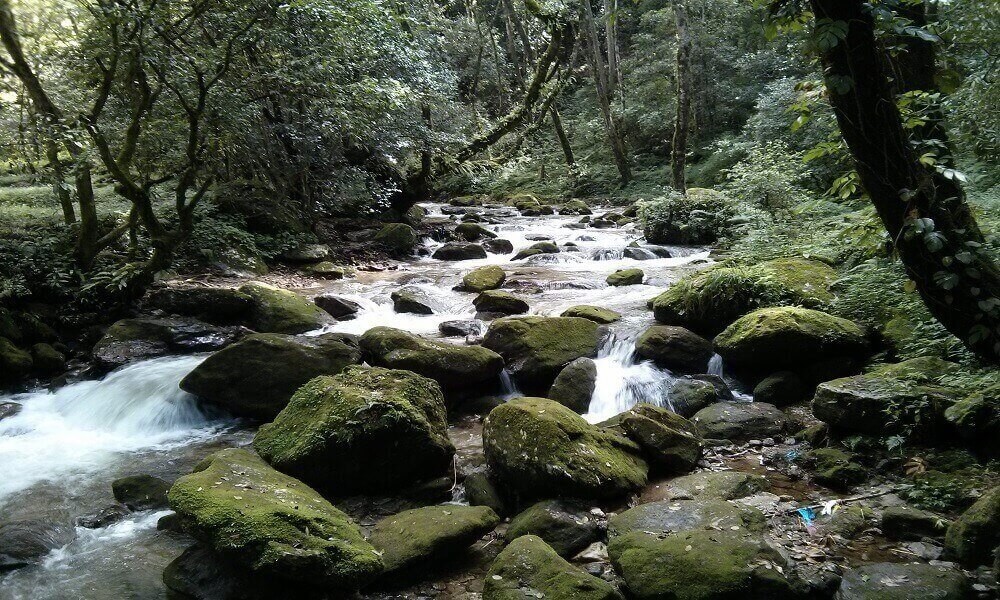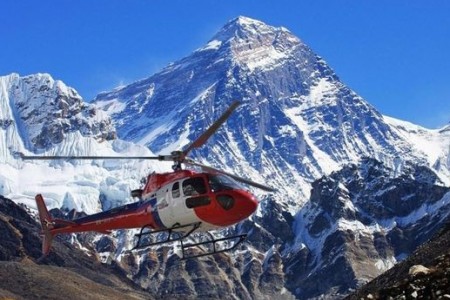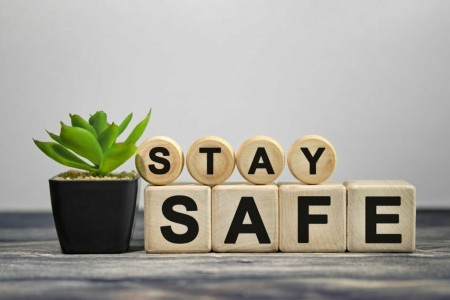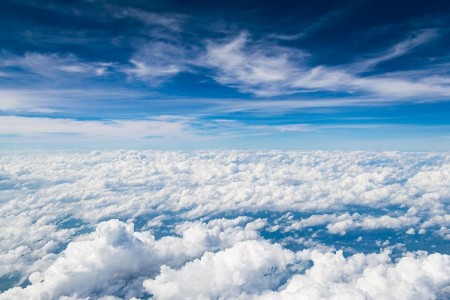.jpg) Helambu circuit trek is popular for having easy trails that can be finished in a short time period. The routes have still not been completely exploited being this near to Kathmandu.
Helambu circuit trek is popular for having easy trails that can be finished in a short time period. The routes have still not been completely exploited being this near to Kathmandu.
The routes are less crowded compared to treks in the Everest region and Annapurna Region. You get the overall view of Mt. Dorje Lakpa, Mt. Brahmi, Langtang range, and many more.
In these trails, you will see many artistic monasteries of Buddhists and their pilgrimage site. This region is also famous for sweet apples.
While walking through the dense forests you get to see many species of Flora and Fauna. And also wildlife found here such as Himalayan Tar, Himalayan black bear, etc.
Helambu Circuit Trek Itinerary begins as you drive from Kathmandu to SundariJal and start your trek from there. Viewing the great mountains and entering lush green forests you reach Sermathang and return back to Kathmandu
You will be trekking in the lower elevation (between 800 m - 3700 m) so the trek is suitable for everyone. This trek is also famous among trekkers that trek in the Langtang region.
Highlights of this Trek
- Visit Sindhupalchowk District
- Trek in low elevation
- Suitable for everyone
- Short and easy routes
- Experience the culture, lifestyle, and tradition
- View many beautiful mountains
- Rich vegetation
Best time to Trek in Helambu region
.jpg) Every season offers different attractions with its own advantages. You can walk through these trails any time you like. However, the temperature varies as you climb higher.
Every season offers different attractions with its own advantages. You can walk through these trails any time you like. However, the temperature varies as you climb higher.
Mostly Autumn and Spring are considered the pleasing time to trek in this circuit. Winter and Monsoon are also fine for trekking but the routes are pretty adventurous this time of the year.
Below you can study in detail regarding the Best time to trek in the Helambu region.
December to February
Winter season begins in December and ends in February. The weather is very chilly but still, this season is as famous as spring or autumn. The temperature can drop as low as -6 degrees.
During winter, the paths are covered in snow making the walk challenging. There are also chances of snowfall so be prepared in advance. In spite of the cold, the beautiful and clear view of the snowy mountain is worth the trouble.
However, it starts getting warm after late February making the days filled with warm sunshine. The walk may be difficult for noob trekkers compared to experienced.
March to May
Spring begins in early March and ends in May. This season usually attracts mountain admirers and travel enthusiasts to visit Helambu. The climate is mild with low chances of rainfall making the routes suitable for trekking.
The temperature rises from 15 to 20 degrees in this region. However, trekking in lower regions is much warmer.
Flowers start blooming during the early march and by the month of April, the valley is rewarded by colorful rhododendron throughout the paths. The weather is cool making the walks easier.
June to August
Monsoon season begins in June and ends in August. The paths are slippery, muddy and wet due to heavy rain. The rainfall usually starts at the end of June and lasts till mid-August.
The temperature rises from 10 to 20 degrees during the day time making it warm to walk. But during the night time, it ranges from 5 to 10 degrees making it a little cold.
Due to rain, walking in the routes might be a problem but different species of flora and fauna bloom during this month. If you have made up your mind to visit Helambu then don’t forget to pack a raincoat and a few extra warm clothes.
September to November
The autumn season begins in September and ends in November. This is considered the peak season for trekking. Due to its moderate climate people prefer to trek during these months.
Everything is just perfect, the weather, the climate, etc. The skies are clear making the mountains visible during the day and skies filled with stars in the night.
The temperature rises to 22 degrees during the day and below 10 degrees at night. As the monsoon season has just finished the environment around you looks clean and fresh.
This is the busiest season of all so you can face some problems. Such as the routes are crowded, there are low chances of getting a room of your desire, etc.
Similar trips you may like:
If you have further questions or seek any travel-related information, please feel free to contact us.
Physical Fitness
Helambu Circuit Trek is considered an easy trek as you will be walking at a lower altitude. So, you don’t have to worry about altitude sickness for this trek.
But you will be climbing up and down hills so you have to do physical exercises. You should go running, swimming, cycling, etc two weeks before your trek.
The walks are easy but if you are a beginner then you can easily run out of breath so physical fitness helps you enjoy the trek at its fullest.
Also, sometimes there might occur other unexpected events such as injury, illness, landslide, etc. So it is better if you have travel insurance for these events.
Detailed Itinerary
In our Helambu Circuit Trek Itinerary, you can read in detail what you will be doing for the next 8 days.
Day 1: Arrive at Kathmandu
As you arrive at the International Airport in Kathmandu our office representative responsible for your pick up will be waiting for you.
Then they will drive you to the hotel where you can freshen up and rest for the day.
You will be staying there for the night.
Day 2: Explore the Capital City - Kathmandu
Today you will be visiting some of the famous and old places in the city. You will wake up, get ready and wait for the guide.
You will visit many UNESCO heritage sites such as Pashupatinath, Boudhanath, Basantapur Durbar Square, etc.
Pashupatinath is a holy temple where Lord Shiva resides, you can see many shiva followers here. You should note that taking pictures inside the temple ground is prohibited so be careful.
Boudhanath and Swayambhunath stupas are a Buddhist pilgrimage spots. Monks are seen praying on these grounds. These stupas are crowded during the day of Buddha Jayanti (the day lord Gautam Buddha was born).
Patan Durbar Square and Basantapur Durbar Square once used to be home for the royals. But nowadays they are mainly tourist attractions sites.
After a short tour inside the valley, you will head back to your hotel. You can then prepare for your trek the next day.
You will rest for the day and spend your night at the hotel.
Day 3: Drive From Kathmandu to Sundarijal then Trek to Chisapani
 You will wake up early this morning as you will be driving towards Sundarijal. It is about 1 and a half-hour drive covering a distance of 17 km.
You will wake up early this morning as you will be driving towards Sundarijal. It is about 1 and a half-hour drive covering a distance of 17 km.
As you drive over the busy road and slowly leave the noise behind. You get to view many large fields and small settlements along the way.
Sundarijal is situated at an altitude of 1463 m. After reaching Sundarijal, you now start the journey to ChisaPani covering a distance of 6.3 km. It is about a 4 - 5 hours’ walk from here.
You start your trek by climbing uphill through villages viewing beautiful waterfalls along the paths. After climbing for about half an hour or so you enter the Shivapuri National Park.
From there you keep on ascending through forests till you arrive at Tamang settlement called Mul Kharka. It is at an altitude of 1900 m.
Then you move through the ridge that surrounds the Kathmandu valley. From there you head towards Chisapani through forests filled with oaks.
Chisapani is situated at an altitude of 2300 m. The view of Kathmandu valley from up here is quite extraordinary.
You will spend your night here.
Day 4: Trek from Chisapani to Kutumsang
Today you will walk up early and view the sunrise from Chisapani. After the beautiful view, you head towards Kutumsang. It is about 6 - 7 hours from Chisapani to Kutumsang.
You will begin your walk by descending the hills till you reach Pati Bhanjang, which is at an elevation of 1770 m. Then you climb up till Thodung danda and descend from there till you arrive at Golphu Bhanjyang. It is situated at an altitude of 2130 m.
Today you will make many up and downhill climbs before you reach your destination Kutumsang. It is situated at an elevation of 2470 m.
You will stay here for the night.
Day 5: Trek from Kutumsang to Tharepati
On your fifth day, you will trek to the highest point of this trek i.e. Tharepati. It is about a 4-5 hours walk from Kutumsang to Tharepati.
You will make a steep climb through the colorful forest of rhododendron, magnolia, pines, etc. From there you cross a hilltop of Kyulo Bhanjyang reaching a wide-open field.
As you follow the trails it leads you to Magen Goth from where the peaks of Langtang and Gosaikunda look astounding. Walking furthermore you reach Tharepati.
Tharepati is situated at an altitude of 3610 m. The stupendous view of landscapes and the snowy mountain will mesmerize you.
You will spend your night here.
Day 6: Trek from Tharepati to Tarkeghyang
On your sixth day, you will head towards Tarkeghyang. It is about a 4 - 5 hours walk from Tharepati.
You will descend through forests filled with various species of Flora and Fauna till you arrive at a small sherpa village named Melamchi Gaon.
Melamchi Gaon is situated at an altitude of 2530 m, which offers the view of artistic monasteries and Gompas.
From the village, you make a steep climb down and cross a bridge above Melamchi Khola. From there you head uphill till you arrive Tarkeghyang.
Tarkeghyang is situated at an elevation of 2620 m. This village is famous for its wood carving and orchids of sweet apples. This is home for the Hyolmo community that has a culture similar to the Sherpa community.
You can roam the village and taste their famous apple. You will spend the night here.
Day 7: Trek from Tarkeghyang to Sermathang and drive back to Kathmandu
Today is your last day in the Helambu region, you will now head towards Sermathang. It is about a 4-5 hours walk from Tarkeghyang.
After a wonderful night in the Hyolmo village, you will now walk the unspoiled paths that lead through forest areas. The view of Helambu village is quite remarkable as you walk past many Buddhist statues and prayer flags.
Viewing the high mountains and landscape you reach Sermathang. Sermathang is situated at an altitude of 2693 m.
From here you drive down the roads till you reach Melamchi bazar. And head back to Kathmandu seeing the scenic view of hills, villages, etc.
Reaching Kathmandu you will be dropped off at your hotel where the rest of the evening is yours.
You can roam the city and visit Thamel which is famous for its nightlife. Or if you are tired then you can rest for the day.
Tonight you sleep here in Kathmandu.
Day 8: Departure
Today is the last day of this trek you will now head back to your home country. Our representatives will see you off till the Airport.
Have a safe flight and visit Nepal again. We the members of Index Adventure hope you had fun in this Helambu Circuit Trek Itinerary.
Equipment list
While going on a trek you have to always remember not to carry unnecessary things and overload your backpack. Your backpacks are usually carried by porters so you have to manage the weight up to 15 kg.
Written below are some things that are necessary for this trek:
For Head and face:
- Scarf, hats or caps
- Moisturizers and sunscreen
- Sunglasses
- Lip balms
Inner Clothing:
- Full or half T-shirts
- Lightweight thermals
- Undergarments
- Shorts
- long cotton pants (better to carry both thin and thick)
Outer Clothing:
- Wind (fleece)jackets
- waterproof jackets and pants
- Sweater
- Down jackets
- Mittens or gloves
Footwear:
- Leather boots
- Hike shoes
- Woolen socks
- Thin socks
- Sandal
Personal Medical kit:
- Bandages
- Band-aids
- Ointment
- Painkiller
- Dettol
- Cotton
Toiletries
- Medium size towel
- Toothbrush
- Toothpaste
- Face wash
- Nail clipper
- Body lotion
- Pocket size mirror
- Soap
- Toilet rolls
Personal Hygiene:
Wet wipes
Hand sanitizer
Other necessities:
- Water bottle
- Chocolates
- Emergency lights
- Small to medium size plastic bags
- Sleeping bag
- Headlamps
- Maps
Luxuries:
- Novels
- Notebooks
- Pen
- iPod
- games such as chess, ludo, etc
FAQ’S
Is this trek safe?
The safety of our customers has always been our priority. The guide we send along with you are highly professional in their field. On top of that, the Helambu circuit trek is in lower elevation so it is not quite as difficult as other circuit treks.
How many hours should we walk in a day?
Usually, you will be walking about 4-6 hours per day. However, the hours differ according to trekking routes. The longest walk on a trek can be about 10 hours. And the shortest walk can be about 3 hours.
What equipment should we bring in this trek?
You should carry limited things making your backpack as light as you can. You can know more about it from our Equipment List section.
If I bring extra clothing that is not necessary for this trek can I store them somewhere?
Yes, you can store them in the hotel that you are staying in. Or, you can talk to the hotel owner of any hotel you pass by. If he/she is kind enough and willing to take responsibility for your belongings, he/she will let you drop your baggage/extra load at his/her place.
What is the luggage weight for this trek?
Usually, your porter carries a load of less than 15 kilos. You will always receive your baggage at the end of the day. So things that are necessary while should be carried with you. However, your luggage should not exceed up to 20 kilos.
If you have further questions or seek any travel-related information, please feel free to contact us.
.jpg) Helambu circuit trek is popular for having easy trails that can be finished in a short time period. The routes have still not been completely exploited being this near to Kathmandu.
Helambu circuit trek is popular for having easy trails that can be finished in a short time period. The routes have still not been completely exploited being this near to Kathmandu..jpg) Every season offers different attractions with its own advantages. You can walk through these trails any time you like. However, the temperature varies as you climb higher.
Every season offers different attractions with its own advantages. You can walk through these trails any time you like. However, the temperature varies as you climb higher. You will wake up early this morning as you will be driving towards Sundarijal. It is about 1 and a half-hour drive covering a distance of 17 km.
You will wake up early this morning as you will be driving towards Sundarijal. It is about 1 and a half-hour drive covering a distance of 17 km.

